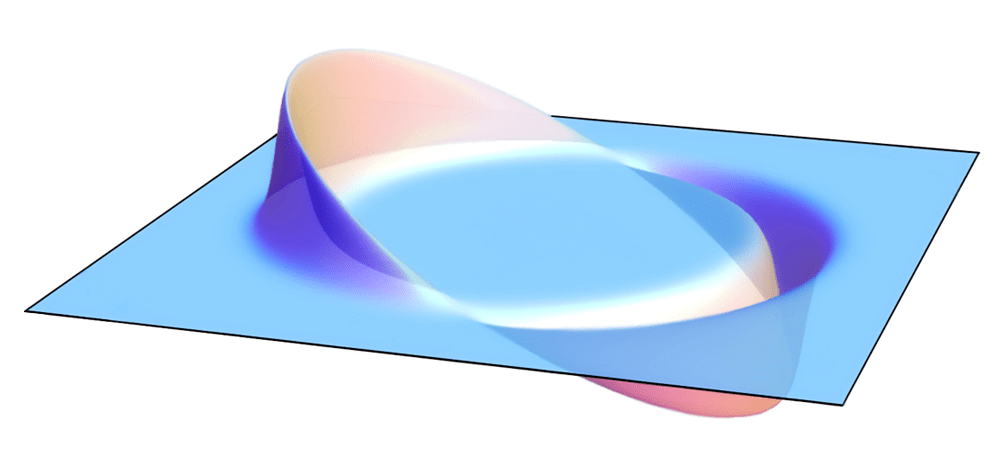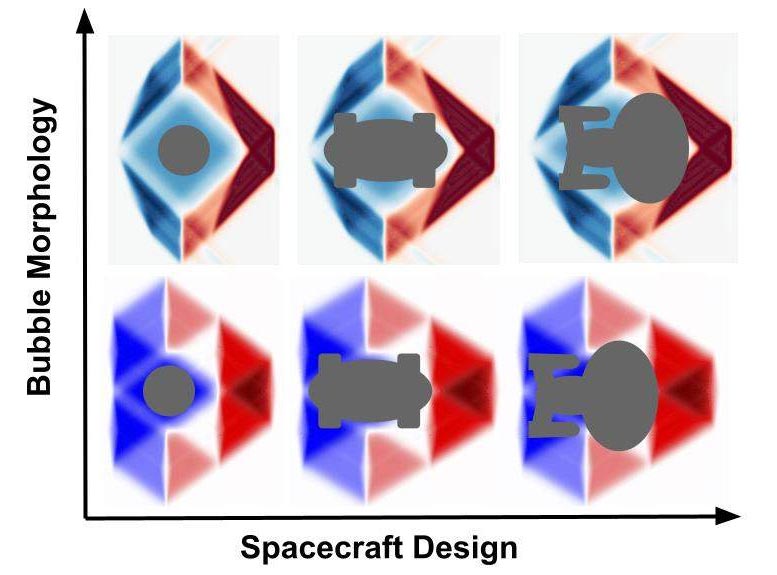Alcubierre Gives us an Update on his Ideas About Warp Drives
By Brian Koberlein
If you want a galaxy-spanning science fiction epic, you’re going to need faster than light travel. The alternative is taking decades or centuries to reach an alien star system, which isn’t nearly as much fun. So, you start with some wild scientific idea, add a bit of technobabble, and poof! Quam Celerrime ad Astra. Everything from wormholes to hyperspace has been used in sci-fi, but perhaps the best known FTL trope is warp drive.
Warp drive has been used in sci-fi since the 1930s, but it was popularized by the 1960s television show Star Trek. Although it’s based on the theory of general relativity, where space and time can be warped by gravity, the TV series didn’t go into details. Warp coils, mumble mumble, dilithium crystals. Never mind the fact that relativity clearly says objects can’t travel faster than light. Without warp drive, Captain Kirk would never be able to woo beautiful aliens.
Still, the idea was intriguing enough that a few scientists tried to develop a theory on how it might work. For example, physicist and science-fiction author Robert Forward proposed several ideas. But things really took off when Miguel Alcubierre published a paper in Classical and Quantum Gravity that could truly be called warp drive.

The paper demonstrated how general relativity allowed for space could be warped in a way that allowed FTL travel. Theoretically, a ship could never travel through space faster than light, but you could form a warped bubble of space around the ship, allowing it to reach distant stars in almost no time. The idea became known as the Alcubierre drive.
There was just one problem. Although the Alcubierre drive was possible within general relativity, it only worked if you could get your hands on a planet’s worth of some kind of exotic material that has negative mass. All known matter has positive mass, so that’s kind of a deal-breaker. Even Alcubierre has said the idea probably wouldn’t work in real life.
New research solves some of these problems but introduces others. Work by Alcubierre and Lobo focuses mostly on the weak-field warp effect. They find that small warp effects act similar to a reactionless drive, such as what has been proposed with the EM Drive. They also found that while the drive will still require negative mass-energy, this could hypothetically be done with a ship of positive finite mass.

Another recent paper by Erik Lentz takes a different approach. He notes there are certain warp configurations that resemble solitons. Solitons are a wave effect that is self-reinforcing. Solitons can maintain their shape while moving at a constant velocity and have been observed in water and other fluids. Lentz demonstrated that while soliton warp bubbles would require an incredible amount of dense matter, it wouldn’t require the energy of the matter to be negative.
Both of these ideas also have one other problem. By creating a relativistic bubble around the ship, they effectively isolate the ship from the outside world. This is known as the horizon problem, and it means a ship’s warp bubble can’t be controlled from inside the ship. The ship’s journey would need to be controlled from the outside. Jean Luc Picard could be ship’s captain, but he couldn’t simply “Make it so.”
Obviously, warp drive is still hypothetical. There are deep theoretical challenges, to say nothing of the engineering ones. But perhaps we’ll have this all worked out by the 23rd century, and we can finally warp swiftly to the stars.
Reference: Alcubierre, Miguel. “The warp drive: hyper-fast travel within general relativity.” Classical and Quantum Gravity 11.5 (1994): L73.
Reference: Alcubierre, Miguel, and Francisco SN Lobo. “Warp Drive Basics.” Wormholes, Warp Drives and Energy Conditions. Springer, Cham, 2017. 257-279.
Reference: Lentz, Erik. “Breaking the warp barrier: Hyper-fast solitons in Einstein-Maxwell-plasma theory.” Classical and Quantum Gravity (2021).
The post Alcubierre Gives us an Update on his Ideas About Warp Drives appeared first on Universe Today.

March 12, 2021 at 10:29PM
via Universe Today read more...

Post a Comment